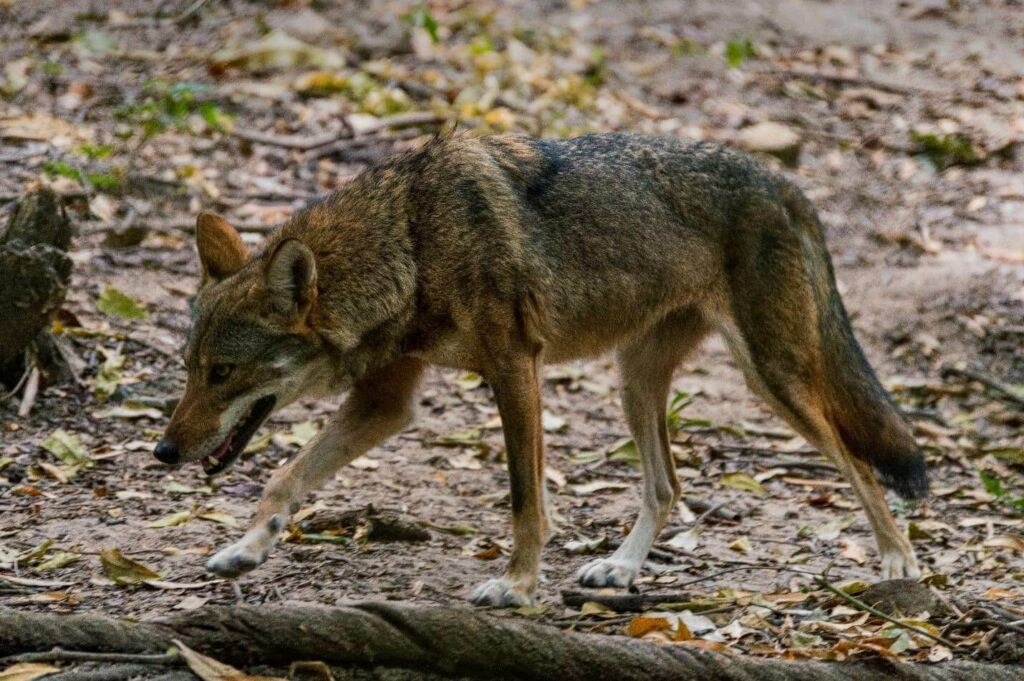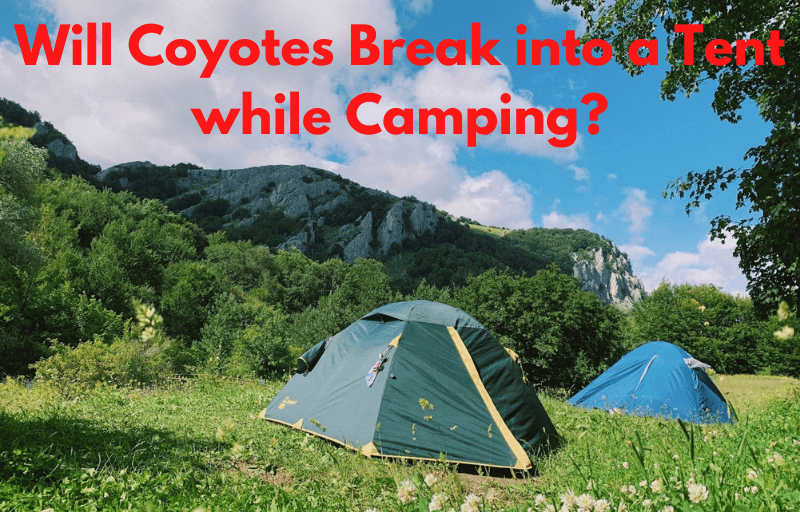Coyote is a common name for Canis latrans, a canine native to North America. The species ranges across much of Central America and the southwestern United States. It occurs as far north as Alaska and all but the northernmost portions of Canada. There are currently 19 recognized subspecies of coyote.
Coyotes have recently expanded their range to include much of the eastern United States and Canada, largely because of their successful adaptation to living in close proximity to humans and their deliberate or accidental assistance from people. In this article you will find some advice and tips on how to keep coyote away from your tent when camping.
Tips on How to Keep Coyote Away from Your Tent
Mating Capacity
Coyotes typically mate once per year, producing a litter of anywhere from two to twelve pups. Pups remain with their parents until they are six to eight months old, at which time they disperse to find their own territories.
Life Span
Coyotes typically live around 10-14 years in the wild, though captive specimens have lived much longer.
General Information on Coyotes
Coyotes are often considered a nuisance because of their habit of killing livestock and companion animals, although the vast majority of their diet consists of small mammals such as mice and rabbits. They are also known to steal food from human garbage cans and pet food bowls. In some areas, coyotes have been known to attack humans, though such incidents are rare and generally happen when the animals are sick or otherwise habituated to people.
Coyotes are attracted to campgrounds because of the easy availability of food. They will eat just about anything, including human food, rubbish, and pet food. While coyotes have been known to attack people, they usually prefer easier prey, such as small mammals or birds. However, if a coyote is feeling threatened or cornered, it may attack a human in self-defence.
There have been reports of coyotes attacking and even killing people, but these attacks are extremely rare. Most coyote attacks on humans occur in the spring and summer months, when coyotes are more active, and their natural prey is scarce. Coyotes also tend to be more aggressive during mating season, which runs from January to March.
Coyotes are sometimes referred to as “brush wolves” or “prairie wolves”, though they are not closely related to either wolves or other members of the Canis genus.
Coyotes play an important role in the folklore and mythology of a number of Native American cultures. In some stories, coyotes are portrayed as tricksters, while in others they are revered as wise and benevolent spiritual guides.
Coyotes are classified as least concern by the International Union for Conservation of Nature (IUCN), though they are still hunted extensively in many parts of North America. Their populations appear to be stable, and they are not currently considered endangered.

Attack Instinct
When it comes to predators, coyotes get a lot of attention. This can be for good reason, as they are incredibly efficient hunters. Their sharp eyesight, hearing, and sense of smell help them stalk their prey undetected. Once they’re close enough, they use their powerful legs to chase down their target. And if that doesn’t work, they’re not afraid to go in for a kill with their sharp teeth.
If you encounter a coyote while out hiking or walking your dog, make sure to give it plenty of space and do not attempt to feed it. If a coyote does attack, fight back, and try to scare it off by making noise and looking as big as possible.
Coyotes are generally shy around humans and will usually avoid contact if they can. However, there have been a few reports of coyote attacks on humans, particularly in California. In most cases, these attacks were carried out by sick or injured coyotes, or coyotes that were protecting their young.
How to reduce the Risk of an Attack
If you’re camping in an area where coyotes are known to live, there are a few things you can do to reduce the risk of an attack:
– Don’t leave food or rubbish out in your campsite. Store food in airtight containers and dispose of your garbage properly.
– Keep your pet on a leash at all times, and don’t leave them unattended.
– If you see a coyote, make yourself as big and loud as possible. wave your arms, shout, and throw things if necessary to scare it away.
– Be especially cautious if you’re camping with small children or babies. Keep them close by at all times and never leave them alone.
Despite the potential risks, coyote attacks on humans are still relatively rare. By taking some simple precautions, you can help reduce the chances of an encounter with a coyote while camping.
Tips to Keep Coyotes Away from Your Tent!
Coyote attacks on humans are rare, but they can happen. If you’re camping in an area where coyotes are known to live, there are some things you can do to reduce your risk of being attacked.
First, make sure you camp in a well-lit area. Coyotes are more likely to attack if they feel they have the advantage of darkness.
Second, keep your campsite clean. Coyotes are attracted to garbage and will rummage through it looking for food. If they find food in your campsite, they may start to associate humans with food and become more aggressive.
Third, make sure you keep your pets under control. Coyotes are often attracted to pets, especially small ones, because they see them as easy prey. If you have a pet with you, make sure it stays close to you and doesn’t wander off into the darkness.
Fourth, if you are a parent, you need to speak to your children about what to do if they encounter a coyote.
Fifth, be aware of your surroundings and all the activity going on around you. Coyotes are more likely to attack if they feel you’re unaware of their presence. If you see a coyote, make some noise to scare it away.
And sixth, make sure you always bring a first aid kit with you at all times wherever you go.
Following these tips will help reduce your risk of being attacked by a coyote while camping. However, if you do find yourself in the middle of a coyote attack, there are some things you can do to defend yourself.

How to Survive a Coyote Attack?
It’s not common for coyotes to attack people, but their attacks can be quite vicious. In most cases, these attacks are a result of the coyote feeling threatened or cornered. They may also attack out of hunger if they feel that humans are invading their territory.
The best way to avoid a coyote attack is to be aware of your surroundings. If you see a coyote, make yourself as big and loud as possible. This will usually scare the coyote away.
If a coyote does attack, fight back! Use whatever you have at hand to defend yourself and try to aim for the Coyote’s face.
Additional Resources
If you are looking for more tutorials, walkthroughs and troubleshooting about camping and enjoying the outdoors, here are some additional posts to check out:
Conclusion
While coyote attacks are rare, it’s always better to be safe than sorry. So next time you’re out in nature, keep your eyes peeled for these cunning predators. And if you do encounter one, don’t hesitate to defend yourself. To answer the question now, will a coyote break into your tent? The answer is “NOT LIKELY”! Thanks for reading, if you think I forgot something or if you simply want to share a story or some advice, feel free to leave a comment or your opinion below. Be safe and have fun.!

